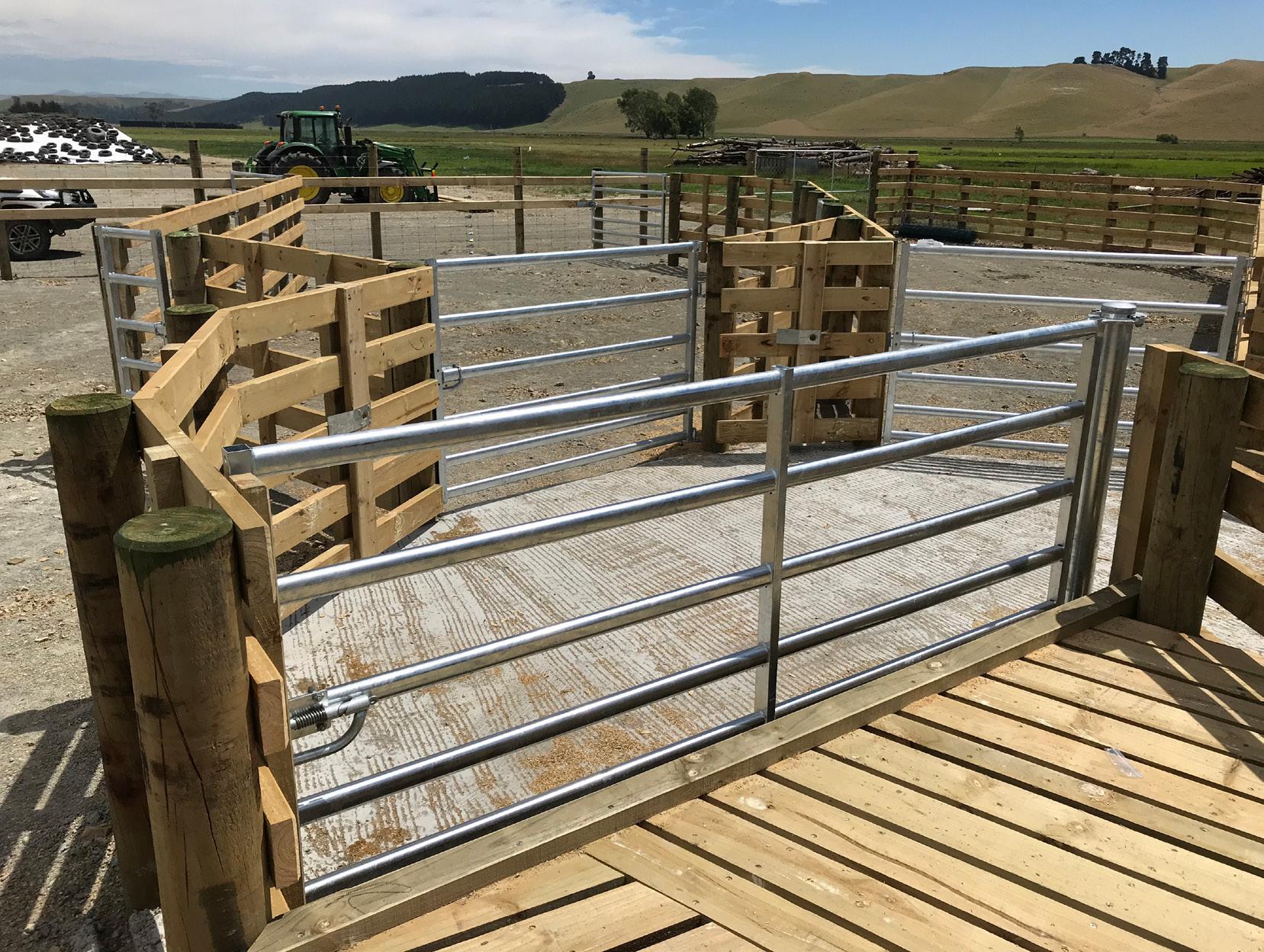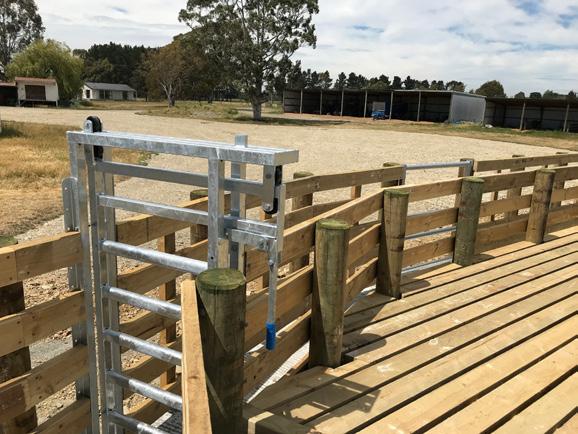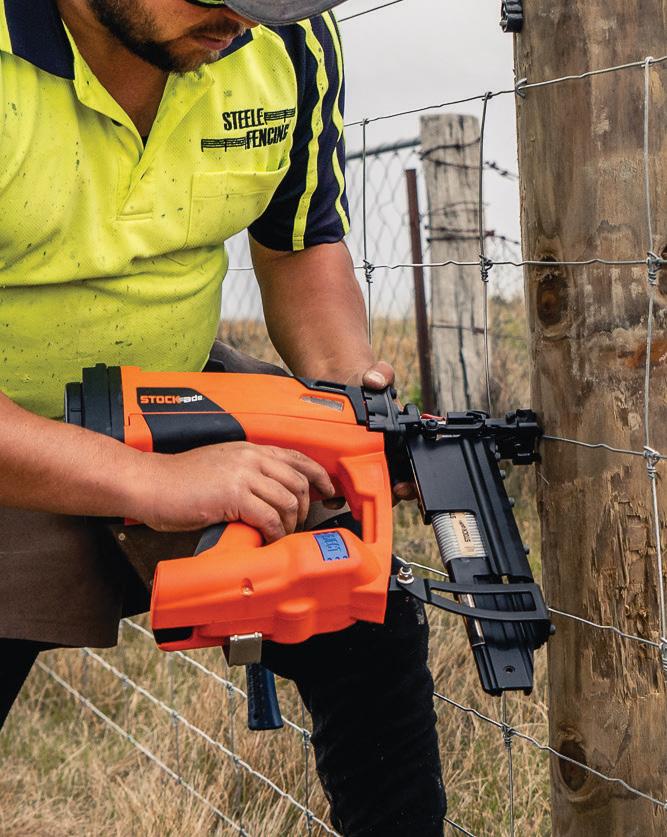
6 minute read
The process of designing, sizing and installing stockyards and gates
Building a new set of stockyards is a huge expense for farmers in this day and age, with prices of both timber and steel increasing more rapidly than ever. It shows the lengths farmers will go to ensure quality of animal health by maintaining farm infrastructure.
Well built yards make it a lot easier, safer and more efficient for everyone involved in working with the stock including farm workers, vets, technicians and truck drivers. In the last few years we have built several sets of yards, both sheep and cattle in the South Canterbury region. Timber yards with steel gates and concrete floors still seem to be the most popular choice.
Advertisement
When designing a set of yards, concept designs are usually drafted while sitting at the kitchen table. It’s a rough plan, sometimes a coffee cup or even a beer bottle might be used to draw a circle race. I like to take two or three different ideas to a client and then discuss with them what will work for their farm and things usually develop from there. It all depends on how many stock units they are wanting to run, what the purpose of the yards is and how big the pen sizes need to be. I ask if they want a round pen with a backing gate or just a normal forcing pen; how many sliding gates they want in the race and if they want a single or double load out ramp. Generally, clients are very receptive to advice on how to go about things and they welcome suggestions.
Stockyards require a lot of accuracy when driving posts and care needs to be taken with measuring and marking out so that spacings are the correct size. However, the yards are mostly built prior to going through and measuring all of the gateways to ensure perfect accuracy for slam catches. It also makes it a lot easier having the gates fabricated after the posts are driven and yards are built so you’re not trying to fit a square peg in a round hole.
This does mean there can be a bit of wait time where the yards aren’t able to be used until the gates show up and are installed but in the long run it is more efficient. If we are using pre-fabricated gates, we always make sure the gates are on site prior to post driving to ensure the measurements are dead right.
In South Canterbury we have some good local engineers building our gates and ramps; Gibson Bros Limited in Fairlie and Agriboss Engineering in Timaru. We use a



lot of Te Pari slam catches and also some of their pre-fabricated gates. The Te Pari slam catches are good to use even on the custom-made gates as there is the benefit of being able to purchase both right-handed and left-handed catches and they have 25mm of adjustment if there is any movement with timber shrinkage. In sheep yards, standard gate chains are often used but it is down to the preference of the client.
For cattle yards, we tend to use a lot of 2.4m gates. It’s a good size that you can fit enough animals through, but if you want to stop one you still have a reasonably big presence in the gateway when standing in it. It’s also a good size practically as the gates are normally light enough that you can slam them fast and they tend to stand the test of time without sagging too much. They are also easier to transport and hang at this size. We usually go for 1400mm high and have six rails spaced 150mm wide at the bottom, getting further apart at the top. 50mm x 50mm galvanised box section is used. When hanging yard gates, we like the gudgeons to come off the post at a 45° angle so that the gate will swing right back to the boards and you also get a bit of adjustment in the gudgeons to get it sitting right. If your gate isn’t hung right it won’t meet the slam catch and in some cases won’t swing right back (not to mention it looks awful).
In the last year or two we have built three sets of yards for a large client in South Canterbury. We built some sale pens on a station for a calf sale venue, and a set of cattle yards on a dairy farm for young stock. The other set were large scale yards on their run-off block which were built to manage about one thousand cows. They have large holding pens, a large round forcing pen, a 20m long race split into three with sliding gates and a double load out ramp. When building the large set of yards we stripped an old set of cattle yards which was being pulled down and salvaged what was still in good condition in terms of steel gates. It was good to be able to re-use some of the materials without them going to waste and some of the original gates were also modified by the engineers to get them to suit the new yards. The double load out ramp and 32 new gates were made by Gibson Bros Limited.
Sheep yards have more variation in gate size usually, ranging from 450mm x 900mm to 3000mm x 900mm. When building sheep yards, generally you are working around more of what is already there, including building a load in race into a woolshed. Recently we built a completely new set of sheep yards, again with custom steel gates from Gibson Bros Limited. For this project the gates were galvanized steel frames made from angle iron and box section. We then bolted in three 150mm x 25mm boards inside the angle iron frame so they were a combination of timber and steel. The top board needs to be flush with the top of the steel so that there is no gap in which a sheep dog could get a paw stuck and get hurt.
Building yards is a rewarding aspect of fencing because the finished product is quite an art. It’s always great to get a few photos from above when you have finished a set so that you can appreciate the full capacity of the project. The process of building yards forces you to think and calculate a bit more than your standard fence so it can be a good challenge at times. Just like with fencing, it’s good to be able to drive past and see the yards working well when the job is finished.
Article written by Dan Douglass
Dan Douglass Fencing South Canterbury

CONSISTENT RESULTS











